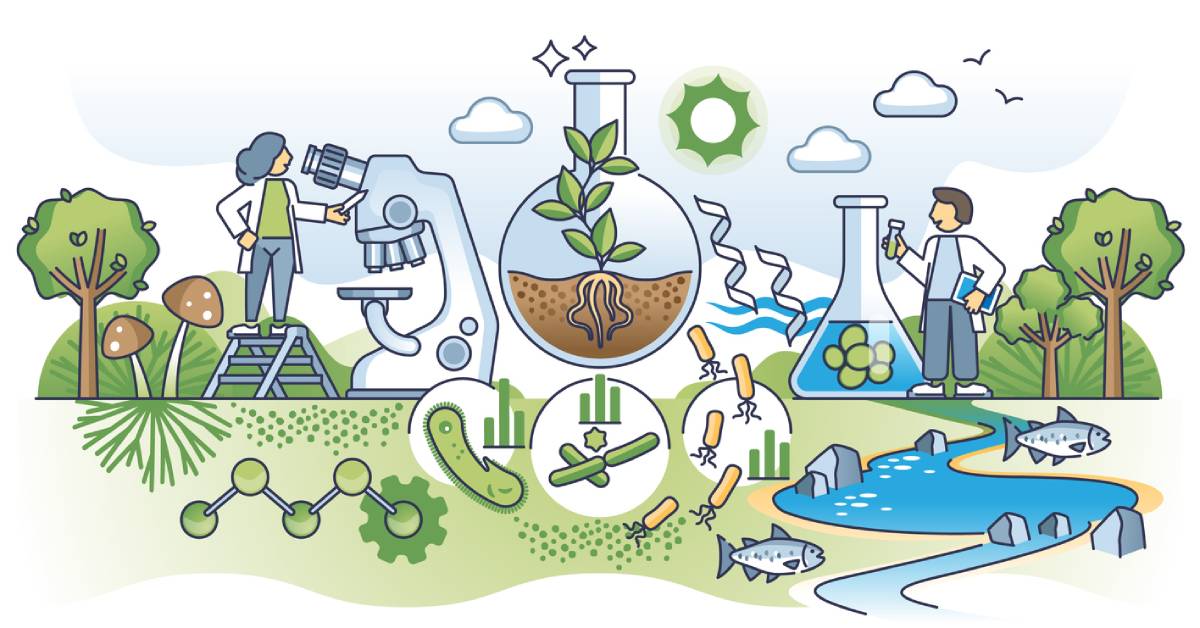If you work with or manage contaminated sites, you’ve probably noticed how bioremediation has become the go-to solution for many soil and groundwater contamination problems. When environmental consulting services recommend bioremediation approaches, they often prove both cost-effective and eco-friendly compared to traditional dig-and-dump methods. Companies are also finding that these biological treatment methods can help reduce their pollution liability insurance costs by demonstrating proactive environmental stewardship and reducing long-term cleanup obligations.
Enhanced Bioaugmentation with Designer Microorganisms
One of the most exciting developments involves the use of specially selected or genetically modified microorganisms. Researchers are identifying bacterial strains with enhanced capabilities for breaking down specific contaminants. These organisms can metabolize pollutants that naturally occurring microbes struggle with, including chlorinated solvents, PFAS compounds, and complex petroleum hydrocarbons.
The process involves careful laboratory selection and testing to identify microbes with the right enzymatic pathways. Once identified, these organisms can be cultured and introduced to contaminated sites where they work alongside native microbial populations. The results have been impressive, with treatment times often reduced by 30-50% compared to traditional approaches.
Many environmental consulting services now maintain partnerships with specialized laboratories that can provide custom microbial cocktails unique to specific contamination profiles. This personalized approach to bioaugmentation represents a significant shift from umbrella products of the past.
Mycoremediation: Fungi Take Center Stage
Fungi have become powerful allies in environmental cleanup efforts. These organisms produce enzymes that can break down a wide range of pollutants, including some that bacteria cannot effectively process. Mycoremediation projects are now being implemented at sites contaminated with a range of substances, from diesel fuel to industrial solvents.
The process works by introducing specific fungal species to contaminated areas, either through direct inoculation or by creating favorable conditions for native fungi to thrive. The fungi form extensive networks of thread-like structures called mycelia that can penetrate deep into soil matrices, reaching contaminants in areas that other treatment methods might miss.
White rot fungi have shown particular promise for treating sites contaminated with polycyclic aromatic hydrocarbons (PAHs) and other persistent organic pollutants. These fungi produce lignin-degrading enzymes that can break down complex molecular structures, effectively neutralizing contaminants that might otherwise persist for decades.
Electrobioremediation: Combining Biology with Technology
This innovative approach combines biological treatment with electrical current to enhance the cleanup process. During this process, electrodes are installed in the contaminated zone, and a low-level electrical current is applied. This current serves multiple purposes: it can mobilize contaminants, enhance microbial activity, and create favorable chemical conditions for biodegradation.
The electrical current helps move contaminants through the soil, bringing them into contact with microorganisms that can break them down. Some systems use the electrical current to deliver nutrients or electron acceptors directly to subsurface microbes.
Phytoremediation Advances
Plants have long been utilized for environmental cleanup, but recent advancements have significantly enhanced the effectiveness of phytoremediation. Researchers have identified plant species with enhanced uptake capabilities for specific contaminants and developed techniques to improve plant survival and growth in contaminated environments.
One promising development involves the use of plant-microbial partnerships. Certain plants can form mutually beneficial relationships with soil microorganisms, creating rhizosphere environments that are particularly effective at breaking down contaminants. These partnerships combine the extensive root systems of plants with the metabolic capabilities of microbes.
Genetically enhanced plants are also showing promise, though regulatory approval for their use in environmental applications remains complex. These plants have been modified to produce higher levels of specific enzymes or to tolerate higher concentrations of toxic compounds.
Real-Time Monitoring and Adaptive Management
Modern bioremediation projects increasingly incorporate sophisticated monitoring systems that provide real-time data on treatment progress. These systems use sensors to track parameters such as dissolved oxygen levels, pH, temperature, and specific contaminant concentrations.
The data collected allows project managers to make immediate adjustments to treatment parameters. If microbial activity appears to be declining, nutrient injection rates can be increased. If pH levels shift outside optimal ranges, buffering agents can be added to maintain the optimal pH range. This adaptive management approach has significantly improved treatment outcomes.
Economic and Risk Management Benefits
The economic advantages of modern bioremediation extend beyond simple treatment costs. Companies that implement biological treatment systems often find that their pollution liability insurance premiums decrease due to the reduced risk profile associated with biological treatment methods. Insurance providers recognize that biological treatments tend to be more sustainable and pose fewer long-term risks than some traditional approaches.
The long-term nature of biological treatments also provides ongoing risk reduction. Unlike some treatment methods that merely relocate contamination from one location to another, bioremediation actually destroys contaminants, thereby eliminating future liability concerns.
Future Trends
The field of bioremediation continues to evolve rapidly. Researchers are exploring applications of artificial intelligence to optimize treatment parameters and predict treatment outcomes. Nanotechnology applications are being investigated for enhanced nutrient and oxygen delivery to subsurface microorganisms.
Climate change considerations are also influencing the design of bioremediation. Treatment systems are being designed to be more resilient to temperature fluctuations and extreme weather events. There is also growing interest in bioremediation approaches that provide additional environmental benefits, such as carbon sequestration and habitat creation.
Staying current with these developments is essential. The field is moving quickly, and the most successful practitioners are those who can evaluate and implement new approaches while maintaining focus on fundamental biological principles. The future of environmental cleanup increasingly relies on working with natural processes rather than against them, and bioremediation perfectly aligns with this philosophy.
Environmental Consulting Services in Calabasas
To learn more about the latest trends in bioremediation and take steps to protect the environmental well-being of your own property, contact our environmental consulting team today.
